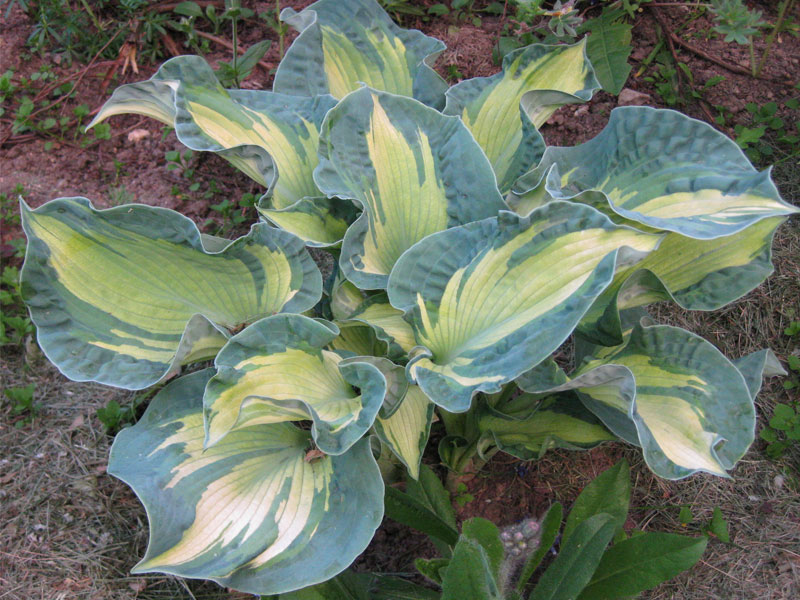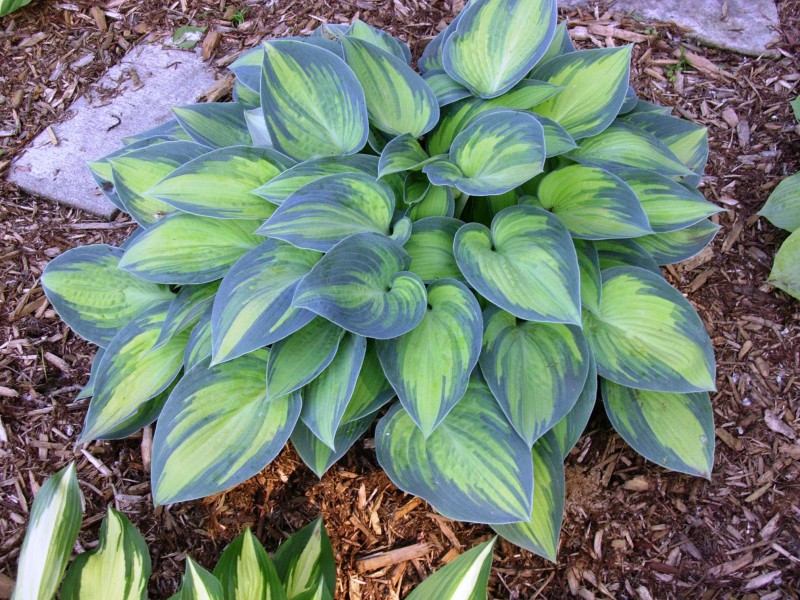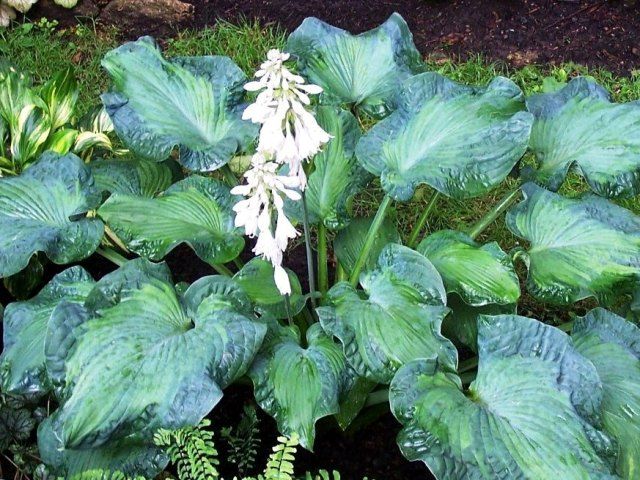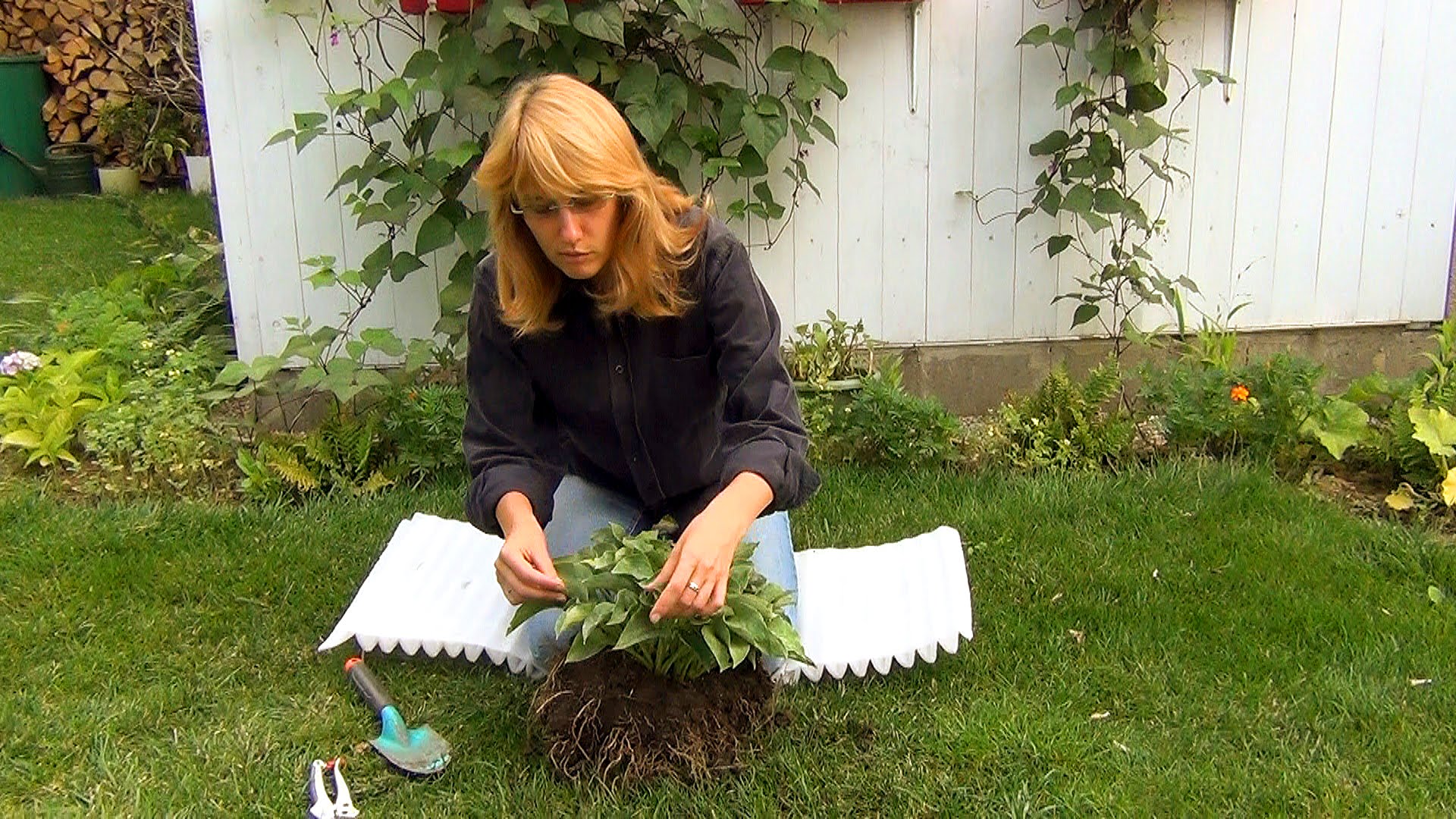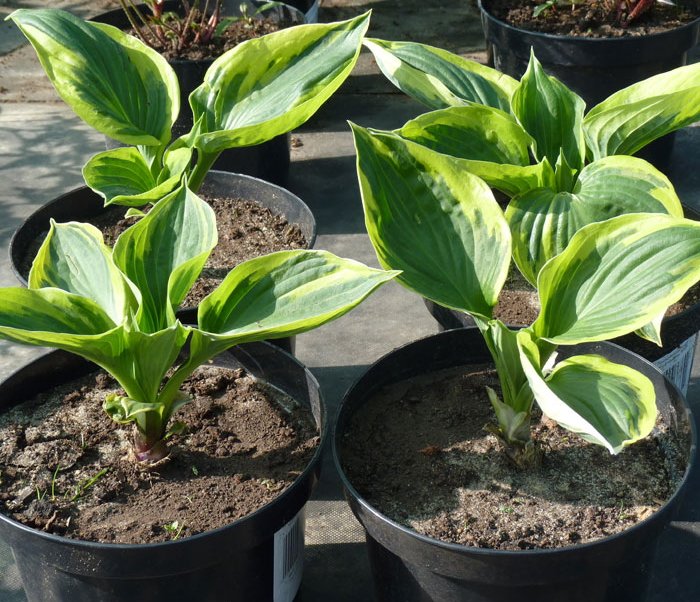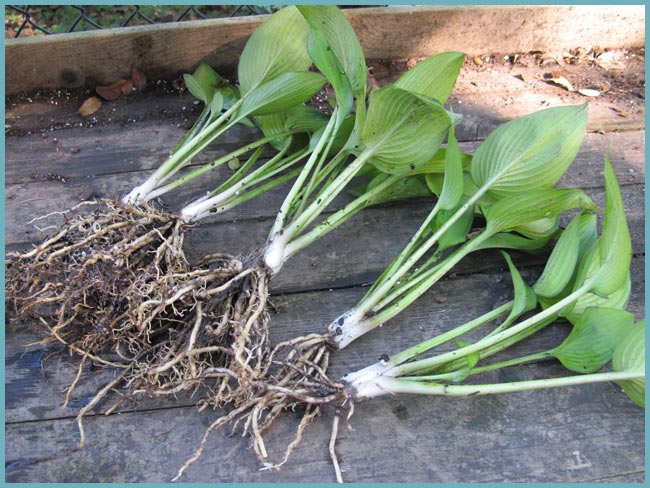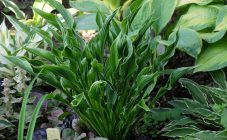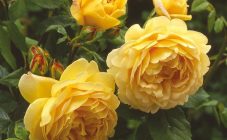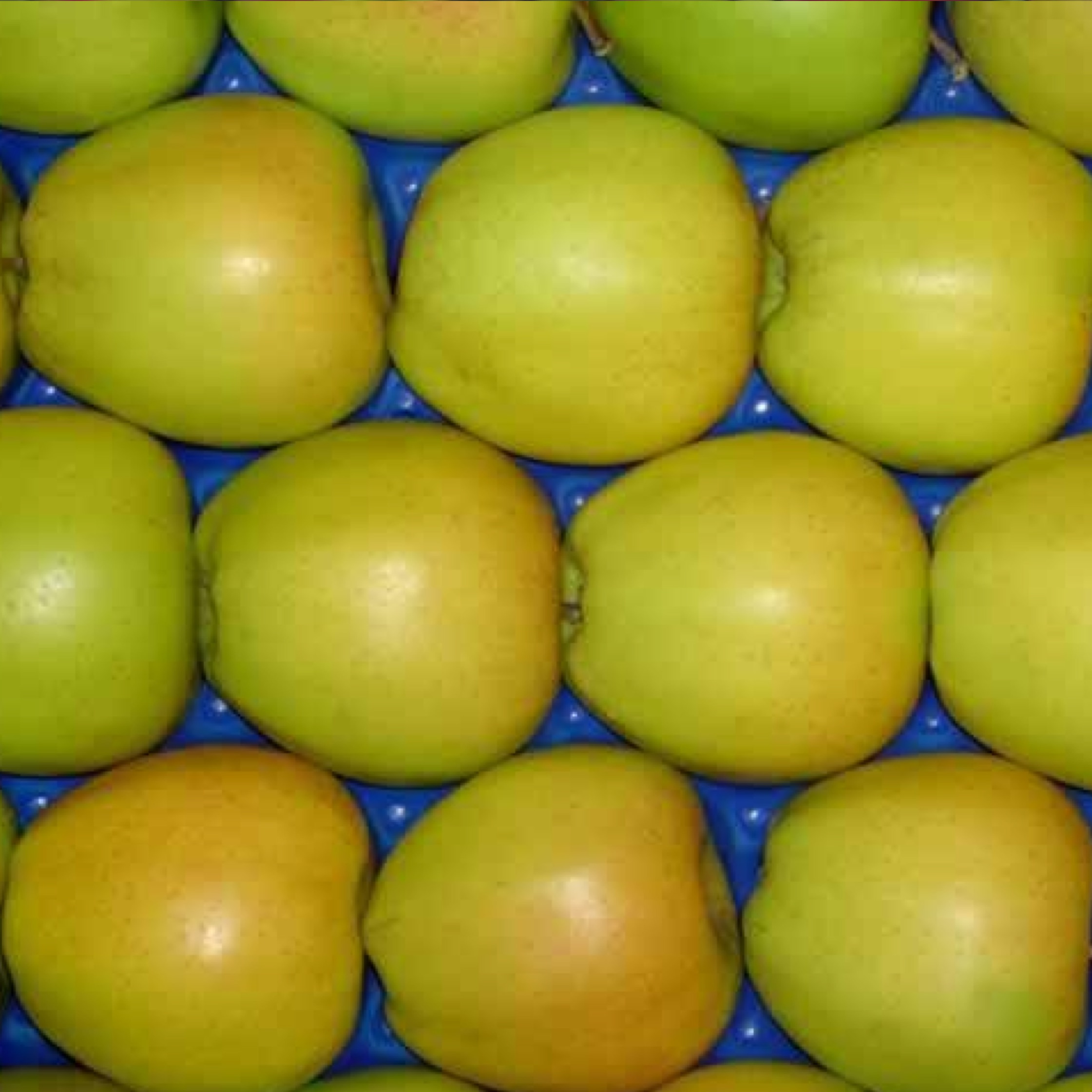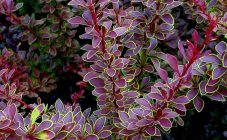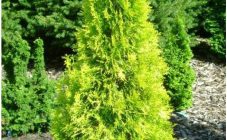Content:
Hosta Golden Meadows is described as the most beautiful long-term representative of the Asparagus. It is considered the most popular plant among gardeners.
The culture is used for a decorative function in horticulture. Effectively adapts to other plants in the composition. Hosta Golden Meadows is described as catching the eye with the beauty of its leaves. Also, gardeners often love her for a long period of residence - more than 25 years.
History of creation
Hosta Meadows is a hybrid. Bred by the originator Van Elderen. There are 40 species in nature. Initially, they grew in East Asia (Korea, China, Japan), in the southwest of the Far East, the Kuril Islands and Sakhalin.
Variety characteristics
Description
Leaves are dense and tough, large, wavy at the edges, similar to terry. Color - gray-green with a creamy core. The border is wide feathery, blue in color. The center of the leaf plate in the spring is golden, in the middle of summer it is cream, then it begins to turn green.
The originality lies in the twisted leaves and the change in color of the leaves at different periods of the season. The shape of the leaf is round, the size is 23 by 15 centimeters. The plant is powerful, reaching 60 cm in height. It grows gradually.
Location and lighting
The variety loves partial shade. Scorching rays can burn out the core. In a space that is too dark, it can turn completely green. In nature, hosts grow in river and lake valleys, on mountain slopes and forest edges.
Winter hardiness
Carries cold without shelter.
Species affiliation
Meadows is considered a herbaceous perennial of the Asparagus family.
Bloom
Occurs in July. The buds are like bells or little lilies. At the end of a long process, many flowers bloom.
About pests
Not damaged by slugs.
Humidity
The plant is hygrophilous.
Features of agricultural technology
Meadows hosts are unpretentious and grow anywhere in the garden. A dry slope, a wet lowland, and an area under trees are suitable.
The choice of location is determined by the color of the foliage. For Hosta Golden, a place with partial shade is suitable, for example, in the shade of trees, since it needs a little sunlight to acquire a beautiful golden color. If there is no moderately shaded area, then place the hosta on the west or north side of other large flowers. It is watered a lot, the soil is mulched with compost.
When planting, adhere to the recommended depth. The root collar should be 4 to 5 centimeters deep. Otherwise, on the one hand, the roots will begin to rot, on the other, they will be pushed to the surface.
This plant is large in size and leaves. A lot of moisture constantly evaporates from it. The soil must be moistened so that large and lush leaves will grow. It is especially necessary to water the young growth. So that the soil does not become very compacted, it is necessary to water it with a jet with a medium pressure. The soil should be soaked 10-15 centimeters. Watering is carried out either in the morning or in the evening. In sandy areas, the hostu is watered every day. With a lack of moisture, darkening will appear on the tips of the leaves.
Soil for Meadows:
- Nutritious neutral;
- Slightly acidic.
Compost and sand will have to be added to heavy clay soil, peat and leaf humus to dry and loose soil.
It is undesirable to replant adult bushes that have been growing for more than 10 years.This can negatively affect them. If a transplant is needed, then they do it in the spring or at the end of August - early September. Water the seedling 20-30 minutes before placing it in the ground. Leave a distance of 30-40 cm between the bushes. Water for two weeks daily.
Organic fertilizers are added as a subcrust: humus and compost, and during planting, a complex of minerals is poured into the pit. In acidic soils, PH is normalized with dolomite flour or ash. Mulch with humus, cut grass, semi-decomposed sawdust. In autumn, such procedures are carried out to protect against frost when there is no snow.
Of the mineral fertilizers, potassium, phosphorus and nitrogen are used in a ratio of 1: 2: 1. The first top dressing is in April (the beginning of leaf growth), the second - after 6 weeks, at the end of May, the final one - in July.
It is necessary to cut off shoots with buds after flowering, apply fertilizers by the end of July, cover the ground with mulch and add tobacco dust from pests there, treat with fungicides (Fitosporin), cover with dry branches. Film, roofing felt and other poorly permeable materials cannot be used for insulation.
Reproduction:
- Seeds. It is difficult to germinate the hosta in this way, so gardeners do not recommend it. With this reproduction, the plant will become decorative only by the age of 4 years.
- Division of the bush. The rhizome can be successfully divided throughout the season, but is best done in spring and early fall. To reduce evaporation, part of the leaves must be removed. The separated part is planted and watered. Young leaves will appear soon.
- Cuttings. When dividing the bush, stem cuttings are formed. Part of the roots with a bud are placed in a greenhouse. After a short time, they grow up.
Diseases and pests
The host is not surprised by anything. Even, unlike other varieties, slugs are not afraid of Meadows. It has tough leaves that they cannot gnaw through.
In rare cases, the plant can infect the black weevil. The foliage turns yellow and withers. Sometimes the host becomes infected with the X or HVX virus in the form of yellow round spots. All affected flowers must be burned or removed from the site.
When leaf tissue is dehydrated in the heat, foliage can dry out - this disease is called rust. The bush is placed in a shaded area and watered abundantly.
Advantages and disadvantages of the variety
Hosta Golden has positive aspects:
- not damaged by slugs;
- unpretentious;
- is a long-liver, growing period - more than 25 years;
- this hosta is similar to a chameleon, changes color all season;
- large and showy.
Negative sides:
- the center of the leaf turns green during the summer;
- can burn out in the scorching sun.
Hosts of Golden Meadows amaze with a unique change in their color and double leaves.
